Long-term 3D human liver microtissueco-cultures: characterization and implication for drug-induced hepatotoxicity studiesAbstractMorphology
人3D肝脏微组织长时间共培养:药物诱导的肝毒性实验的描述和影响
一 Abtract 摘要
药物性肝损伤(DILI)一直是急性肝衰竭和上市药物被撤回的主要原因。显而易见的,临床前体内动物实验和体外二维(2D)人肝脏模型,无法精确的预测人体内药物性肝损伤(DILI)。本研究的目的是通过长时间三维(3D)共培养人肝脏微组织(MTs),来评估其是否适合药物诱导的肝毒性试验。二维(2D)的单层细胞培养和三维(3D)的共培养(人原代肝细胞和Kupffer细胞)分别维持培养2周和5周,在整个培养时期,系统性评估可行性、肝特异性形态、功能性和mRNA的表达。结果表明,微组织(MTs)维持的时间是传统2D培养的5倍,并且在坏死中心(necrotic core)的存在下,能维持3D微组织的大小平稳(直径250-300nm)。微组织(MTs)中CYP3A4、CD68和胆盐输出泵蛋白(bilesalt export pump proteins)都有表达。白蛋白的分泌量在微组织(MTs)中明显高于传统2D培养。在微组织(MTs)培养的整个时期,脂蛋白刺激诱导白介素-6的分泌。与2D培养7天比较,转录组分析显示,微组织(MTs)微分调节145个基因,包括涉及到免疫反应、肝特异性功能和吸收、分布、代谢、排泄的过程。7天培养比较,微组织(MTs)中CYPs 3A4 、1A2和2D6的活性比2D培养高2倍,再继续培养,只有微组织(MTs)中CYPs 3A4 、1A2和2D6仍保持活性。微组织能特异性检测药物性肝损伤(DILI)诱导性药物曲格列酮(Troglitazone)和托卡(tolcapone)在临床上相关浓度。综上所述,微组织(MTs)可以维持有差异的肝特异性表型长达4周,是长期研究人免疫介导的药物性肝损伤(DILI)很有价值的体外模型。
二 morphology and functionality 形态和功能
Morphologyof 3D human liver microtissue co-cultures with Kupffer cells
人3D肝脏微组织与kupffer细胞共培养的形态
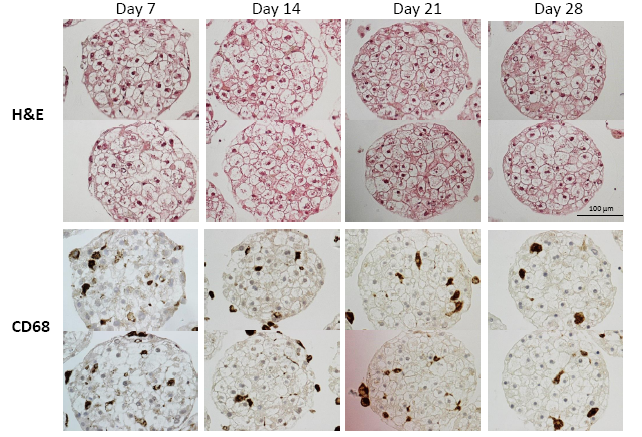

Figure 1:人3D肝脏微组织:H&E(苏木精)染色,CD68抗体和BSEP(胆盐输出泵)蛋白的表达。
Pooled 3D human liver microtissues were collected on culture days 7, 14, 21 and 28 and subsequently subjected to immunohistochemicalstaining for CD68. The expression of BSEP was only determined in 21 day old cultures.
Kupffer cell functionality of human liver microtissues
人肝脏微组织中Kupffer细胞的功能

Figure2:人3D肝脏微组织IL-6的分泌和TNF-α的分泌。
Microtissues were in cubated with medium(±10μg/mLLPS) for 24hours.Following the incubation period, pooled medium(6wells) was collected andanalyzed for IL-6 secretion (IL-6 Human ELISA kit, Life Technologies™, USA) and TNF-α secretion (TNF-α Human Ultra sensitive ELISA kit, Life Technologies™,USA). Result sarepresented as the mean±SD from technical duplicates.
Viability and hepatocyte functionality of human liver microtissues
人肝脏微组织的可行性和肝功能性
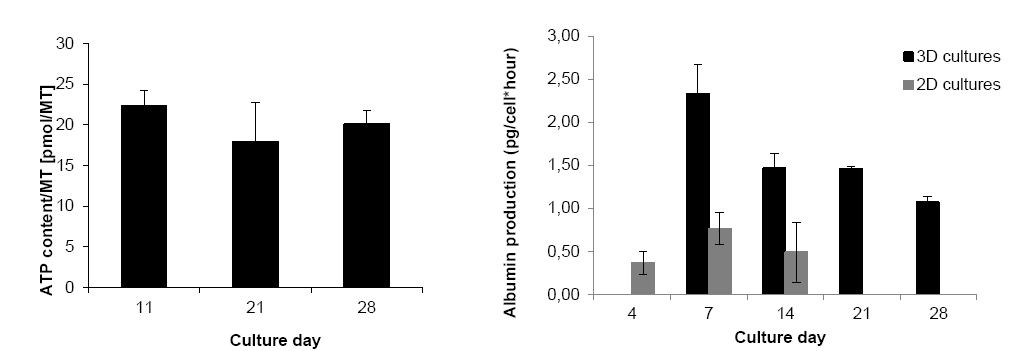
Figure3:(左)人3D肝脏微组织中细胞内ATP含量。Intracellular ATP content was assessed (CellTiterGlo® luminescent assay, Promega, USA)in 3D human liver microtissues over the 4 week culture period. The assay was performed in replicates of 8. Results are presented as the mean±SD.
(右)2D单层培养和人3D肝脏微组织中白蛋白的产生。Albumin production was assessed (Human Albumin ELISA assay, Bethyl Laboratories,Inc.,USA)in 2D monolayers and 3D human liver microtissues over the respective culture period. The assay was performed in replicates of 3. Results are presented as the mean±SD.
三 Gene expression and CYP activity 基因表达和CYP活性
mRNA expression of phases I and II ADME genes in 3D human liver microtissues
人3D肝脏微组织中I和II阶段ADME基因mRNA的表达
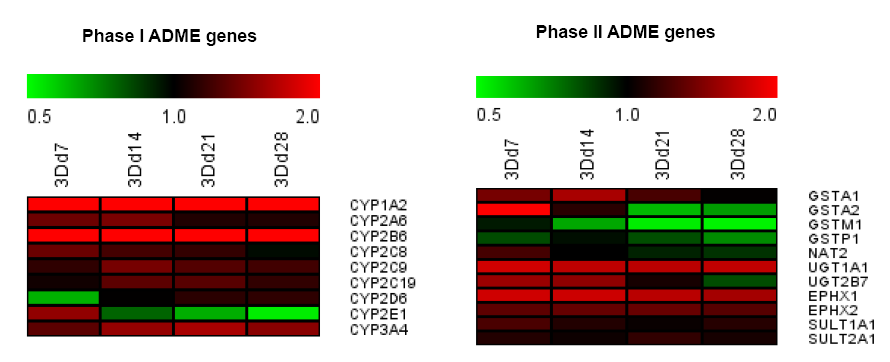
Figure 4:人3D肝脏微组织中I和II阶段ADME基因mRNA的表达。
RNA from 2D monolayers (culture day 7) and pooled 3D human liver microtissues (culture days 7, 14, 21 and 28 ) was subjected to transcriptomic analyses (Affymetrix GeneChip® Human Gene 2.0 ST array). Heat maps were subsequently generated using the Ingenuity® Path way Analysis software.The data is presented as the fold change in mRNA exprssion of there spective genes in 3D human liver microtissue cultures (culture days 7, 14, 21 o r28) compared to 2D monolayer cultures (culture day 7).
CYP enzyme activity in 3D human liver microtissues
人3D肝脏微组织 CYP酶的活性

Figure 5:人3D肝脏微组织和2D单层培养细胞中CYP1A2、CYP3A4、CYP2D6酶活性比较。
The enzyme activites of CYPs1A2, 3A4 and 2D6 was assessed in 2D cultures (culture day 2) and 3D cultures (culture days 7, 14, 21, 28) following in cubation with Phenacetin (CYP1A2), Midazolam (CYP3A4) or Bufuralol (CYP2D6)for 24 hours. Following the respective in cubation period, the media from 2D monolayer cultures or 3D human liver microtissue cultures were collected and subsequently subjected to LC/MS analyses (Pharmacelsus GmbH, Germany). The assay was performed in replicates of 3 (2D cultures) or 6(3D cultures). The results are presented as the mean±SD.
四 Drug Sensitivy & Specificity 药物敏感性和特异性
Repeat exposure of 3D human liver microtissues to Tolcapone and Entacapone
用Tolcapone(托卡朋)和 Entacapone(恩托卡朋)对人3D肝脏微组织重复用药
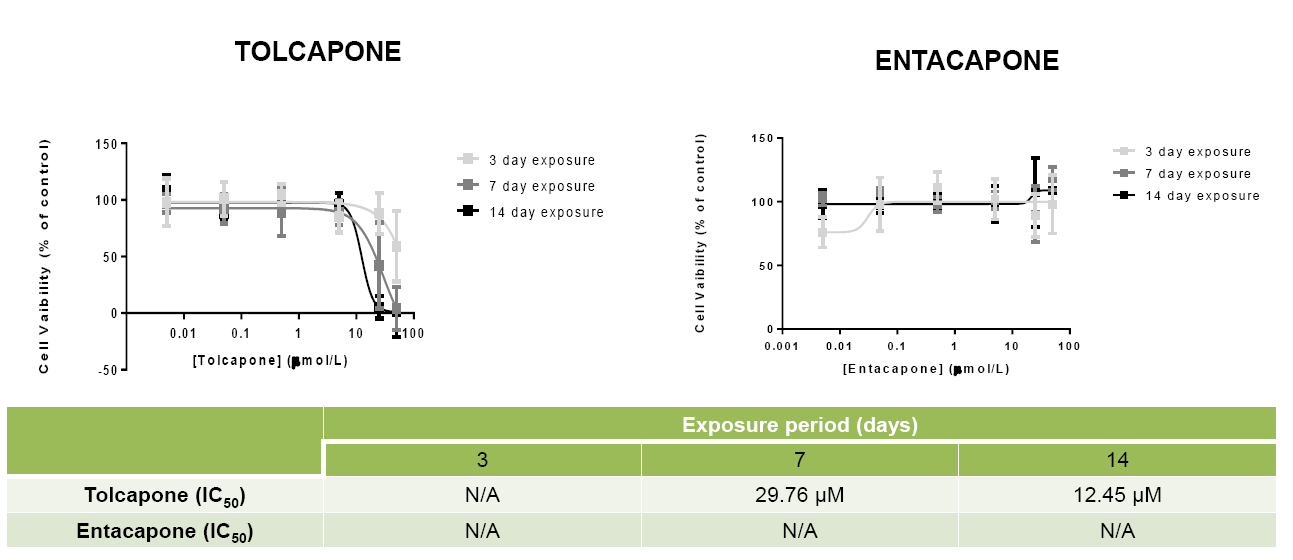
Figure6(a):用Tolcapone(托卡朋)和 Entacapone(恩托卡朋)对人3D肝脏微组织重复用药。
3D human live rmicrotissues were exposed to Tolcaone ( 5nM – 50μM ) or Entacapone ( 5nM – 50μM ) for 3days (no-redosing), 7days (re-dosing every 48 hours) or 14 days (re-dosing every 48 hours). Following the exposure period, cell viability was assessed using the CellTiter-Glo® luminescent assay. Concentration–response curves were generated using GraphPad Prism® software, version 6. The assay was performed in replicates of 4. The data is presented as the mean±SD.
Repeat exposure of 3D human liver microtissues to Troglitazone and Pioglitazone
用 Troglitazone(曲格列酮)和 Pioglitazone(匹格列酮)对人3D肝脏微组织重复用药
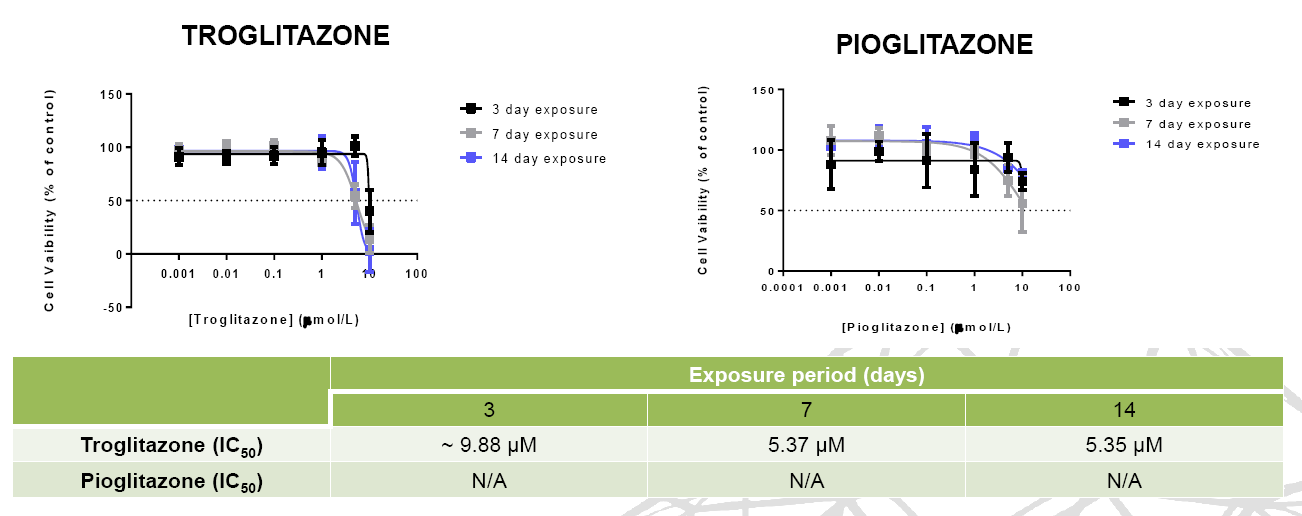
Figure6(b):用 Troglitazone(曲格列酮)和 Pioglitazone(匹格列酮)对人3D肝脏微组织重复用药。
3D human liver microtissues were exposed to Troglitazone or Pioglitazone for 3 days (no-redosing), 7days (re-dosing every 48 hours) or 14 days (re-dosing every 48 hours). Following the exposure period, cell viability was assessed using the CellTiter-Glo® luminescent assay. Concentration–response curves were generated using GraphPad Prism® software, version 6. The assay was performed in replicates of 4. The data is presented as the mean±SD.
五 Conclusion 结论
1. 人3D肝脏微组织的可行性和功能性至少可以维持4周
2. 在培养时期,人3D肝脏微组织维持稳定的细胞组成
3. 在培养时期,人3D肝脏微组织中I和II阶段ADME基因维持稳定的mRNA表达
4. 人3D肝脏微组织具备肝脏的特异性表型
5. 在培养的整个时期,人3D肝脏微组织中Kupffer细胞一直保持其功能性
6. 人3D肝脏微组织可以区分出肝毒性和非肝毒性药物
7. 人3D肝脏微组织的长时间培养,适用于慢性药物——诱导毒性研究
六 Current / Future studies 当前或未来的研究方形
1. 筛选肝毒性药物库
2. 比较人肝脏微组织和2D培养的基因表达谱
3. 在微流控“体芯片”系统,人肝脏微组织和其它器官类型微组织相互联络,更好地预测药物的药理学和毒理学。
原文献链接:http://www.qbioscience.com/FileUPLoad/DownLoadFile/635633928687031250.pdf
更多产品信息及资料,请来电咨询400-8858-216 |











